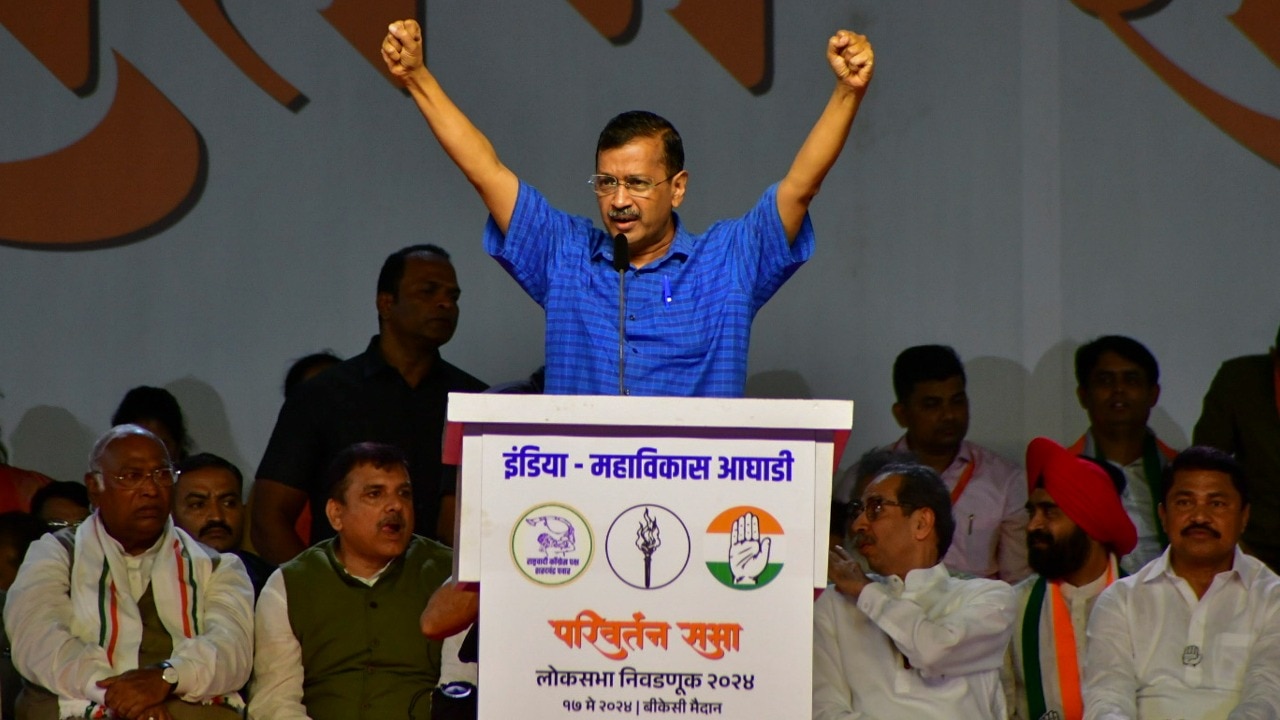"Ram Mandir wahi banayenge (Will construct the Ram temple on that very spot) pledge has been fulfilled," Uttar Pradesh Yogi Adityanath said on Monday after the Pran Pratishtha of the Ram Lalla idol in Ayodhya.
Yogi Adityanath recently said he became a monk because of the Ram temple movement. He, in fact, has a generational link to the Mandir Movement.
The Goraknath Dham in Gorakhpur, of which Yogi Adityanath is the current Mahant, was associated actively with the Ram Temple Movement since over 75 years. And Yogi Adityanath has a link to the old Ram Lalla idol that "appeared" in the disputed Babri Masjid in 1949.
"The struggle of generations and the resolve of centuries has been completed with the consecration of the new idol of Lord Shri Ramlala taking place today at Shri Ram's birthplace in Shri Ayodhya Dham," Yogi Adityanath wrote on X.
Paying tribute to his gurus and their contribution in the Mandir Movement, Yogi wrote: "On this occasion, there is an emotional tribute to Yugapurush Brahmalin Mahant Digvijaynath Ji Maharaj and National Saint Brahmalin Mahant Avedyanath Ji Maharaj."
MAHANT DIGVIJAYANATH AND THE RAM LALLA IDOL
The Gorakhnath Mutt's connection to the Ram Mandir was established in the pre-Independence days, when the then Mahant Digvijaynath joined the Hindu Mahasabha and became an advocate for the construction of the Ram temple in Ayodhya.
He, through sermons and meetings, is also credited to have united Hindus across all castes and classes.
To bolster the temple movement, he established the Akhil Bharatiya Ram Rajya Parishad Party in 1948 along with the Raja of Balrampur, Pateshwari Prasad Singh.
Mahant Digvijaynath was the one who started a recitation of Akhand Ramayana nine days before the appearance of the Ram Lalla idol on December 22-23, 1949.
He was also one of the few who saw the Ram Lalla idol "appear mysteriously". He asked the locals to start praying to the 'idol', against the administration's order of its removal from the Shri Ram Janmabhoomi.
The appearance of Ram Lalla set off a chain of events that shaped the movement for decades to come. The movement, whose foundation was laid by Mahant Digvijaynath, was carried forward by his successor Mahant Avaidyanath after Digvijaynath passed away in 1969.
Mahant Digvijaynath is regarded as the guru grandfather of the present-day Mutt chief, Yogi Adityanath.
He is the Uttar Pradesh Chief Minister and was present at Ayodhya for the 'Pran Prathishta' ceremony at the Ram Mandir.
MAHANT AVAIDYANATH: 'FACE OF RAM MANDIR MOVEMENT'
After Mahant Digvijaynath's demise, the mantle was taken up by Mahant Avaidyanath, who went a step further in amplifying the Ram Temple Movement and taking it to the masses.
Mahant Avaidyanath was unanimously named the President of the newly founded Shri Ram Janmabhoomi Mukti Yagna Committee in 1984. The Samiti sought to unite various Hindu organisations and sadhus under one umbrella.
In September 1984, he launched a religious procession from Sitamarhi in Bihar to Ayodhya in UP, with the aim of 'liberating' the Ram temple. Sitamarhi is considered to be the parental place of Goddess Sita.
The movement led by Mahant Avaidyanath, who was elected four times to the Lok Sabha from Gorakhpur, influenced the country's social and political landscape.
Mahant Avaidyanath, under the banner of the Shri Ram Janmabhoomi Mukti Yagna Committee, along with thousands of its members, formally presented a formal demand letter for a Ram Temple at Ram Janmabhoomi to then Uttar Pradesh Chief Minister Narayan Dutt Tiwari, which made the state government uneasy.
Mahant Avaidyanath's leadership was also instrumental in announcing the foundation stone-laying ceremony for the Ram temple on November 9, 1989. Brushing aside the Union Home Ministry's concerns for the same, undeterred, he went ahead to "lay the foundation stone" and linked the movement to "national honour and the Hindu faith".
It was again under his guidance when the symbolic digging of the foundation, and the first stone was laid by a Dalit, Kameshwar Prasad Chaupal.
The subsequent years saw relentless efforts, including the 'Karseva' in 1990, during which devotees sacrificed their lives for the cause.
Despite the killing of Karsevaks in police firing in 1990, Avaidyanath carried on with the movement and mobilised the youth with the slogan "Baccha Baccha Ram ka".
In 1996, Mahant Avaidyanath designated Yogi Adityanath as his successor.
Yogi Adityanath was in 1998 elected as a Member of Parliament from Gorakhpur, the seat from which his guru Avaidyanath had earlier won, and became the Chief Minister of Uttar Pradesh in 2017. Yogi Adityanath was involved in the Vishwa Hindu Mahasammelan and the formation of the Hindu Yuva Vahini in 2002.
This is how Yogi Adityanath came to be the inheritor of the Mandir Movement from his guru father Avaidyanath. It is also because of his guru grandfather, Digvijaynath, that he has a connection with the Ram Lalla idol of 1949.
Published By:
Sushim Mukul
Published On:
Jan 22, 2024

 3 months ago
26
3 months ago
26








 English (US) ·
English (US) ·